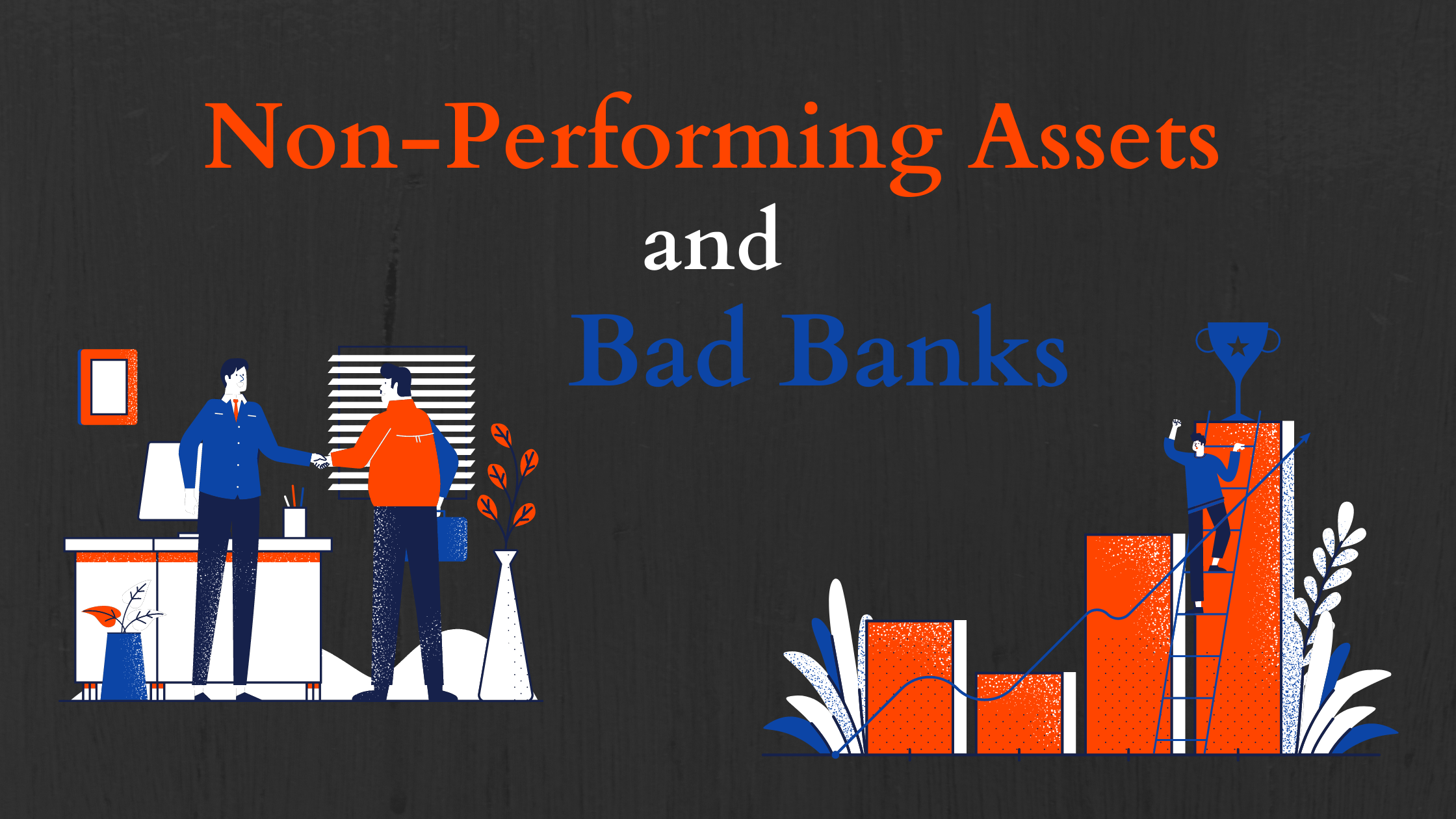
Given the NPA crisis in India, it is no news that there is an immediate need for a powerful mechanism to rectify the detestable attributes of the banking industry. Recently, taking the matter into the hand, the finance minister announced the sovereign guarantee of Rs 30,600 crore.
The government has released funds for the security receipts to be issued by the National Asset Reconstruction Company Ltd. The government will be setting up the NARCL, a bad bank that will emphatically resolve Rs 2 lakh crore non-performing loans in the banking sector.
The establishment of the NARCL
The establishment of a bad bank may give rise to a pertinent question that how will the NARCL work? It is to be noted that the NARCL will effectively issue securities receipts to banks. This will be done while taking on the non-performing assets from the bank’s books. According to the newer provisions, the securities receipts will be valid for up to five years.

According to Sitharaman the emphatic idea behind the establishment of the same will be to ensure recovery of value locked within assets that will make the banking system not only robust but also efficient in its core activities.
According to the newer provisions, the NARCL will effectively pay up to 15% of the agreed value. The payment will be made for the loans in cash and the remaining 85 percent will emphatically be government-guaranteed security receipts. Talking about the stake of banks in the NARCL, the public sector banks will hold up to 51% stake in the NARCL and the financial institutions and the debt management companies will effectively hold up to around 49 percent.
The ambitious target
The government has put an ambitious Rs. 2 lakh target on the transfer of NPAs to the NARCL. The first phase will include the transfer of NPAs worth Rs 90,000 crore.

it is to be noted that along with the NARCL establishment, the government will also effectively set up an India Debt Resolution company. The Debt resolution company will help manage the assets of the banks and will help in the valuation process.
In the debt resolution company, the public sector banks with public financial institutions will only hold up to a maximum of 49% stake. The rest of the stakes will be held by the private banks. Thus, with the increased share of the private banks in the debt resolution company, it is to be noted that the efficiency of the company will rise.
it is to be noted that the recent reforms come after various requests and petitions by SBI and the Indian bank association for a stronger mechanism in order to rectify the NPA situation in India. But, according to reports, the government had been delaying the process on the argument that there were already too many Asset reconstruction companies in the banking sector.
This came even after, the banks’ asset quality review that was carried out in the financial year 2015. According to the quality review, a high incidence and percentage of NPAs were shown in the report. On top of it, the pandemic which has ravaged havoc on the economy has really exacerbated the NPA crisis of the banking and the financial sector.

with the aforementioned statistics, according to other reports, in 2018, just two out of the humongous 21 public sector banks were profitable. Having said that, it is to be also noted that the data for banks in 2021 states that only two banks had reported losses.
It is worthy of mentioning here that most of the bad loans were written off of the books of the bank, thus if the losses of the banks had receded, it was mostly due to writing off loans from the accounting books and not through recovery.
The establishment of the bad bank was announced in the Union Budget for the financial year 2021-22. Talking about the functioning of the bad banks, the bad banks try and manage and dispose of the bad assets of the banks to alternate investment funds and other potential investors for immediate recovery and value realization.

The contentions
According to various experts, even though the move is strategic in dissolving the NPA crisis in India, they have also surfaced their concerns. According to experts, given the humungous amount of NPA accumulation in the banking sector, it is quite a possibility that NARCL will not be able to rectify the situation completely. But given the fact that is providing much-needed capital, it can be called as an introductory step in the series of step restore the sector.
Secondly, the NPA accumulation mechanism is recurring and thus preventive measures cannot end with an introductory strep. Continuous steps to restore efficiency in the banking sector will be crucial. This is mainly due to the fact that the Indian banking sector needs to be made more efficient to concentrate more on its core business like lending and reviving the demand and investment in the economy.
Thus, the current resolution by the establishment of NARCL is quite crucial but stopping right here would not be a very far-sighted approach for the government.




